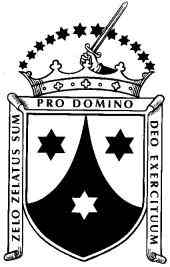This article may be expanded with text translated from the corresponding article in Portuguese. (June 2017)Click [show] for important translation instructions.
|
Antônio dos Santos Cunha was a Portuguese or Brazilian composer who was active in São João del-Rei in Minas Gerais, Brazil, from 1800 to 1822. He was probably Portuguese but biographical details are lacking. S

A composer is a musician who is an author of music in any form, including vocal music, instrumental music, electronic music, and music which combines multiple forms. A composer may create music in any music genre, including, for example, classical music, musical theatre, blues, folk music, jazz, and popular music. Composers often express their works in a written musical score using musical notation.

Minas Gerais is a state in the north of Southeastern Brazil. It ranks as the second most populous, the third by gross domestic product (GDP), and the fourth largest by area in the country. The state's capital and largest city, Belo Horizonte, is a major urban and finance center in Latin America, and the sixth largest municipality in Brazil, after the cities of São Paulo, Rio de Janeiro, Salvador, Brasilia and Fortaleza, but its metropolitan area is the third largest in Brazil with just over 5,500,000 inhabitants, after those of São Paulo and Rio de Janeiro. Nine Brazilian presidents were born in Minas Gerais, the most of any state.
Santos Cunha lived in São João del-Rei from 1786, when he was already an adult. He joined the Lay Carmelites in 1800. In 1815 he traveled to Lisbon, but the date of a presumed return to Brazil is unknown. [1] His importance rests in the volume of sacred works he left marking the entry of romantic influence into the sacred music of the region. [2]

The Third Order of Our Lady of Mount Carmel is a branch of the religious Carmelite Order of the Ancient Observance and was established in 1476 by a bull of Pope Sixtus IV. It is an association of lay people who choose to live the Gospel in the spirit of the Carmelite Order and under its guidance. The Carmelites known for devotion to Blessed Virgin Mary under her title as Our Lady of Mount Carmel.

Lisbon is the capital and the largest city of Portugal, with an estimated population of 505,526 within its administrative limits in an area of 100.05 km2. Its urban area extends beyond the city's administrative limits with a population of around 2.8 million people, being the 11th-most populous urban area in the European Union. About 3 million people live in the Lisbon Metropolitan Area, including the Portuguese Riviera,. It is mainland Europe's westernmost capital city and the only one along the Atlantic coast. Lisbon lies in the western Iberian Peninsula on the Atlantic Ocean and the River Tagus. The westernmost areas of its metro area form the westernmost point of Continental Europe, which is known as Cabo da Roca, located in the Sintra Mountains.




